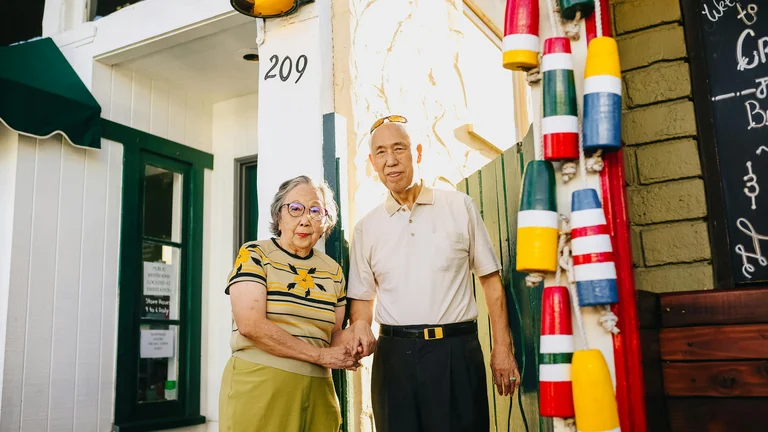Defining the Appeal of Workplace Romance K-Drama Moments

Workplace romance scenes in K-Dramas resonate strongly because they capture a delicate balance between the professional and personal worlds. These moments often explore themes of vulnerability, trust, and tension in environments designed for productivity rather than affection. Unlike typical romantic settings such as cafes, parks, or apartments, the workplace imposes restrictions and risks that make romantic gestures more charged and meaningful. The subtle eye contact exchanged during meetings, the accidental physical touches while reaching for documents, or whispered conversations amid the hum of office equipment all contribute to a heightened sense of intimacy layered with professional decorum.
This juxtaposition enhances the storytelling, using the familiar yet rigid office environment as a backdrop for nuanced human connections. The appeal lies in how these K-Dramas humanize characters who would otherwise be defined purely by job roles or ambitions. This context allows viewers to witness the gradual construction of trust and affection, often starting awkwardly and evolving into heartwarming exchanges. The representation of such moments provides a relatable fantasy for audiences who spend significant parts of their lives working alongside others.
Moreover, workplace romances in K-Dramas differ from conventional romantic tales since they frequently illuminate power dynamics, hierarchy, and social expectations that individuals must navigate. This complexity lends additional layers to interactions, making the moments not just about affection but also about negotiation, compromise, and understanding within constraints.
Iconic Cutest Workplace Romance Moments in K-Dramas
Many K-Dramas have produced unforgettable workplace romance scenes that remain etched in fans’ memories due to their genuine emotion and creative staging. A prime example is the classic spaghetti sharing scene from "What's Wrong with Secretary Kim?" Here, the height difference, affectionate teasing, and vulnerability projected through simple gestures like adjusting a tie culminate in a scene that feels intimate yet innocent. The workplace setting—usually characterized by laptops, paperwork, and conference calls—suddenly becomes transformed into a stage for heartfelt connection, showcasing how even the smallest physical proximity can be fraught with romantic tension.
Another remarkable moment appears in "Strong Woman Do Bong Soon," where the protagonist’s role as a game developer attracts the attention of her boss. Their relationship evolves through tender moments of encouragement within the office, stealing glances in the elevator or the protective gestures during high-pressure meetings. These scenes portray a blend of warmth and professionalism, emphasizing mutual respect alongside blossoming affection.
"Her Private Life" is yet another exemplary K-Drama that leverages the workplace for romance by unfolding emotional layers between a talented art curator and her charming boss. The delicate balance of secrecy and revelation regarding the protagonist’s fan life mingles with rich character interactions at the office, highlighting how shared environments can foster intimate bonds amidst chaotic schedules. These moments deliver captivating chemistry that feels spontaneous yet believable.
Essential Elements that Make Workplace Romance Scenes Endearing
Understanding why these moments strike a chord involves dissecting the elements that render workplace romances so unique and adorable in K-Dramas. The following facets play critical roles:
- Subtlety: Since overt romantic advances in office settings might feel inappropriate or risky, many K-Dramas rely heavily on subtle cues. Slight changes in tone, prolonged eye contact, or delicate touches such as offering a coffee or helping with a tie knit these moments together.
- Power Dynamics: The delicate interplay between superiors and subordinates adds a layer of tension and suspense. Scenes where a boss supports or protects an employee without crossing boundaries tap into fantasies of caring leadership and devotion.
- Accidental Touches and Encounters: Physical contact triggered by accidental bumps, reaching for the same document, or sharing a crowded elevator leads to spontaneous, heart-fluttering exchanges that heighten the romantic suspense.
- Shared Secrets and Silent Support: Characters often bond over shared professional pressures or personal troubles, which fortify their connection and create moments drenched with emotional resonance.
- Gentle Teasing and Playfulness: The workplace often becomes an arena for witty banter and teasing, which lightens the atmosphere and generates charming chemistry without overt declarations.
Each of these aspects contributes to a multi-dimensional portrayal of romance that feels authentic yet escapist. They exploit the constraints and structure of the working world to intensify the sweetness and sincerity of burgeoning relationships.
Comparative Table: Workplace Romance Scenarios Across Popular K-Dramas
| K-Drama | Setting Type | Romantic Element | Key Scene Description | Impact on Audience |
|---|---|---|---|---|
| "What's Wrong with Secretary Kim?" | Corporate Office | Playful flirting & subtle affection | Boss adjusting secretary’s tie, shared lunch moments | Strong appeal through chemistry and power play |
| "Strong Woman Do Bong Soon" | Tech Startup | Protection & support under pressure | Elevator glances, after-hours encouragement | Showcases empowerment and warmth |
| "Her Private Life" | Art Museum/Office | Secret-sharing and hidden fandom | Quiet moments in office, playful teasing | Relatable for fans balancing personal and work lives |
| "Touch Your Heart" | Law Firm | Mentorship & budding love | Courtroom and office collaboration, small physical contacts | Authenticity in growth and mutual respect |
| "Misaeng: Incomplete Life" | Trading Company | Gradual trust & unspoken feelings | Silent support during tough work assignments | Emotional realism in office dynamics |
Step-by-Step Breakdown of Crafting a Memorable Workplace Romance Scene
Creating impactful workplace romance moments in K-Dramas requires a precise combination of writing, acting, and direction. Below is a guideline to how these elements converge effectively:
- Establish The Professional Baseline: Begin by showcasing the daily routines and responsibilities of characters to ground their relationship in reality. This helps to set expectations and highlight any subsequent deviation as significant.
- Introduce Subtle Clues: Insert hints of attraction through body language, lingering looks, and minor gestures. Avoid rushing the intimacy to build anticipation.
- Heighten Tension Through Conflict or Constraints: Use office policies, hierarchical boundaries, or external pressures as barriers. Conflict adds stakes, making moments of closeness more impactful.
- Facilitate Accidental Intimacy: Design scenarios where physical proximity is unavoidable, such as shared desks, group projects, or unexpected meetings.
- Deepen Emotional Connection With Personal Revelations: Allow characters to share vulnerabilities or secrets in trust-laden environments.
- Balance Romantic Gestures With Professionalism: Maintain the tension by keeping gestures restrained and respectful, heightening the value of each encounter.
- Use Visual and Auditory Cues: Employ lighting, camera focus, subtle background music, and pauses in dialogue to emphasize emotional beats.
Following these steps ensures that workplace romance scenes resonate with appropriate realism and charm, encouraging viewers to emotionally invest in the characters’ journey.
The Role of Character Archetypes in Workplace Romance
K-Dramas often utilize distinct character archetypes to enrich workplace romances. A typical dynamic involves the authoritative but caring boss alongside the earnest, hardworking employee. This interplay not only highlights contrasts in status but also creates opportunities for growth and mutual respect.
The "cold but kind" leader archetype entices audiences with his restrained emotions, revealing tenderness only in private moments. Meanwhile, the "naïve yet competent" subordinate garners sympathy through sincere efforts and occasional clumsiness. When these archetypes interact, their polarities generate captivating chemistry, sustaining viewer interest over multiple episodes.
Other archetypes include the witty colleague who provides comic relief and acts as a confidant, the protective senior who mentors younger employees, and the ambitious rival whose presence pressures the central pair. Each archetype contributes differently to the romance’s texture, ensuring a rich narrative fabric that reflects the complexities of real workplaces.
These character roles are further enhanced by the actors’ performances, who bring authenticity and subtle emotional nuances to their interactions. The chemistry between leads depends heavily on how convincingly these archetypes express conflicting desires for professional success and personal connection.
Impact of Cultural and Social Norms on Workplace Romance Portrayal
Depicting romance in office settings in Korean dramas frequently involves negotiating traditional societal attitudes towards professionalism and relationships. South Korea’s work culture tends to emphasize hierarchy, formality, and clear boundaries between personal and business life. These factors heavily influence how workplace romances are written and portrayed.
Many scenes carefully avoid overt displays of affection during work hours, reflecting a cultural preference for discretion. This results in an increased focus on non-verbal communication, indirect expressions of care, and moments occurring outside official working hours, such as late-night project discussions or company events.
At the same time, K-Dramas often push these boundaries by showcasing characters who challenge rigid norms, pursuing genuine affection despite potential consequences. Such narratives reflect evolving social attitudes among younger generations towards work-life balance and personal freedom.
This tension between tradition and modernity provides fertile ground for dramatic conflict and resolution, enhancing audience engagement. It also informs the design of workplace romance moments, ensuring they feel culturally nuanced rather than generic.
List: Key Factors Contributing to the Popularity of Workplace Romance in K-Dramas
- Relatability: Most viewers understand office dynamics, making workplace romances easy to connect with emotionally.
- Realism: Characters portrayed juggling career pressures and personal feelings mirror real-world experiences.
- Escapism: Offers a fantasy of finding love in everyday, unlikely places.
- Character Development: Romantic arcs promote growth, revealing different facets of personality.
- Power Interaction: Hierarchies generate unique tension and excitement rarely found in other romance settings.
- Visual Appeal: Office environments offer variety—modern spaces, casual meeting spots, and after-hours scenes—that add visual interest.
- Subtle Suspense: The risks of exposure or gossip add stakes, making moments suspenseful.
- Supportive Friendships: Coworkers often serve as confidants, enriching the emotional narrative.
Detailed Example Analysis: The Elevator Scene from "Strong Woman Do Bong Soon"
One of the most memorable scenes illustrating workplace romance’s charm unfolds inside an elevator during late hours. The confined space, limited time, and low lighting create an intimate atmosphere. The male lead’s concerned gaze contrasts with the female lead’s hesitant smile as he instinctively protects her from a sudden threat.
This vignette is layered with unspoken emotions. The cramped physical proximity forces vulnerability and blurs professional boundaries temporarily. The deliberate pacing slows dialogue, with pauses accentuating glances and subtle touches. The viewer senses emerging tenderness without overt declarations, a technique that respects workplace decorum while emphasizing personal connection.
Beyond the immediate moment, this scene symbolizes their evolving relationship—professional allies becoming emotional partners. Its popularity among audiences stems from this nuanced portrayal, reflecting the blend of tension, trust, and warmth that defines workplace romance in K-Dramas.
Workplace Romance and Narrative Function in K-Dramas
Romantic subplots set within office environments often serve critical narrative functions extending beyond mere entertainment. They allow writers to explore characters’ multifaceted personalities, illustrating how professional and personal identities intersect. These moments reveal insecurities, ambitions, and vulnerabilities that might remain hidden in strictly work-related scenes.
Additionally, workplace romances introduce conflict and resolution pathways linked to career ambitions and ethical dilemmas. Characters must negotiate loyalty to their roles, the risk of office gossip, and their emotional authenticity. These dynamics generate tension while allowing space for character growth.
Workplace romance can also provide social commentary on contemporary work culture, gender roles, and power imbalances. By portraying respectful yet affectionate relationships between colleagues or bosses and employees, K-Dramas model healthier workplace interactions and challenge outdated stereotypes.
Integrating Humor and Warmth in Workplace Romance Scenes
Humor frequently permeates workplace romantic moments to disarm tension and humanize characters. Lighthearted banter, awkward misunderstandings, and playful teasing soften the intensity of romantic build-up, making characters approachable and their relationships believable.
Scenes where characters accidentally spill coffee, struggle with technical issues together, or exchange sarcastic remarks provide relief amid dramatic developments. This balance between humor and warmth enriches narrative texture and helps maintain audience engagement.
For instance, in "What's Wrong with Secretary Kim?" the protagonists regularly engage in witty exchanges that highlight their growing fondness without losing professional respect. These humorous undercurrents underscore their chemistry, making eventual romantic payoffs feel earned.
Exploring Diverse Workplace Romance Settings in K-Dramas
Although corporate offices dominate as primary settings, K-Dramas diversify workplace romance environments to add freshness and varied dynamics. Settings include law firms, hospitals, start-ups, publishing houses, government agencies, and creative studios. Each environment informs the style of interaction and challenges faced by characters.
For example, medical dramas introduce urgency and life-or-death stakes, allowing romances to develop under pressure and with heightened emotional intensity. Start-up settings encourage innovation-driven collaboration and can foster camaraderie and trust distinct from hierarchical corporations.
These varied workplaces influence the tone of romance scenes, from formal and restrained in bureaucratic offices to casual and spontaneous in creative fields. This diversity expands storytelling possibilities while maintaining the core themes of boundary negotiation and personal intimacy.
Table: Summary of Popular K-Drama Workplace Romance Settings and Their Unique Features
| Setting | Unique Features | Examples |
|---|---|---|
| Corporate Office | Hierarchical structure, formal policies, power dynamics | "What's Wrong with Secretary Kim?", "Touch Your Heart" |
| Start-up Company | Casual environment, innovation focus, peer collaboration | "Strong Woman Do Bong Soon" |
| Healthcare/Hospital | High-pressure, ethical challenges, life-and-death scenarios | "Romantic Doctor Kim" |
| Cultural Institutions (Museums, Publishing) | Creative jobs, personal passion intertwined with work | "Her Private Life" |
| Law Firm | Strict decorum, serious atmosphere, justice-driven | "Touch Your Heart" |
Practical Tips for Writers Creating Workplace Romance in K-Dramas
Successfully depicting endearing workplace romance requires attention to multiple details. Below is a list of key tips writers should consider:
- Maintain Authenticity: Portray realistic office interactions without exaggeration to preserve credibility.
- Balance Romance and Work: Ensure romantic elements complement rather than overshadow professional duties.
- Navigate Power Dynamics Carefully: Avoid problematic clichés by emphasizing respect and consent.
- Show Character Growth: Use romance to reveal strengths and vulnerabilities beyond job roles.
- Incorporate Cultural Nuances: Reflect relevant social norms and workplace etiquette for contextual accuracy.
- Use Visual Storytelling: Employ subtle gestures, facial expressions, and setting details to convey emotions.
- Include Supporting Characters: Use coworkers and friends to build relational networks and provide perspectives.
Applying these strategies helps craft compelling, respectful, and emotionally resonant workplace romance storylines that captivate audiences.
FAQ - Cutest Workplace Romance K-Drama Moments
What makes workplace romance moments in K-Dramas so appealing?
Workplace romance moments blend professional boundaries with personal vulnerability, creating tension and intimacy within structured settings. Their subtlety, combined with relatable office dynamics and power hierarchies, makes these scenes emotionally engaging and realistic.
Which K-Dramas are known for iconic workplace romance scenes?
Popular K-Dramas include "What's Wrong with Secretary Kim?" known for playful flirting, "Strong Woman Do Bong Soon" for protective moments, and "Her Private Life" for secret-sharing romance within a corporate art setting.
How do cultural norms influence workplace romance in Korean dramas?
Korean societal emphasis on formality and hierarchy leads to restrained romantic expressions at work, emphasizing subtle cues and moments outside official hours. This cultural framework shapes the portrayal of office romances as discreet yet emotionally rich.
What are common challenges when depicting workplace romances?
Writers must carefully balance romance with professionalism, address power imbalances respectfully, and maintain authenticity to avoid clichés, ensuring that romantic developments feel genuine within workplace contexts.
Why do viewers enjoy workplace romance settings compared to other romantic scenarios?
Viewers find workplace romances relatable because they reflect real-life interactions and challenges. The tension from navigating personal feelings amid professional duties adds a unique emotional depth and suspense not always present in traditional romantic settings.
Workplace romance moments in K-Dramas captivate audiences by blending professional settings with authentic emotional connections, highlighting subtle gestures, power dynamics, and relatable office challenges. Iconic scenes from popular dramas showcase how love blossoms amid career pressures, making this genre both engaging and culturally nuanced.
Workplace romance moments in K-Dramas offer a profound exploration of human connection constrained by professional environments. Their subtle gestures, emotional depth, and negotiation of power dynamics create compelling narratives that resonate broadly. These scenes exemplify how intimacy can flourish in unexpected places, intertwining career ambitions with personal growth. Through carefully crafted storytelling, they continue to enchant audiences worldwide by portraying love’s delicate emergence amidst the pressures and routines of daily work life.






